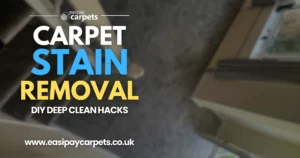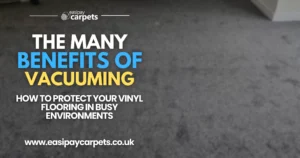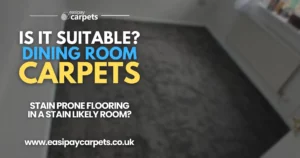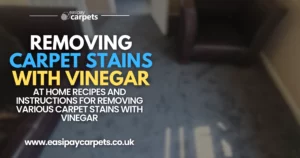
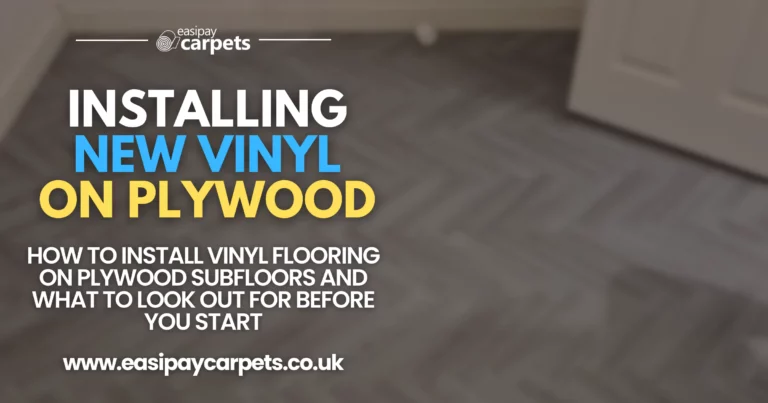
Laying Vinyl Over Plywood: A Step-by-Step Guide
Can You Lay Vinyl Over Plywood?
Yes, you can install vinyl flooring over plywood, but the plywood must be properly prepared to ensure a smooth, stable surface. Whether you’re using vinyl sheets, planks, or tiles, a well-prepared plywood subfloor is crucial to prevent imperfections from showing through and to ensure long-term durability.
This guide covers when plywood is suitable for vinyl flooring, how to prepare it, and step-by-step installation tips.
Is Plywood a Suitable Subfloor for Vinyl Flooring?
Plywood is one of the best subfloors for vinyl flooring because it provides:
- A smooth, even surface for a flawless vinyl installation
- Good structural support for the flooring
- Moisture resistance if the right type of plywood is used
- Better adhesion for glue-down vinyl flooring
However, plywood must be clean, dry, level, and properly secured before installation.
What Type of Plywood Should You Use Under Vinyl Flooring?
Not all plywood is suitable for vinyl flooring. The best options are:
- Exterior-grade plywood (minimum 6mm thick) – Moisture-resistant and durable
- Luan (Lauan) plywood (4-6mm thick) – Ideal for a smooth finish but not suitable for damp areas
- Birch plywood (5-9mm thick) – High-quality, strong, and smooth
Avoid low-quality or untreated plywood, as it may absorb moisture and warp over time.
How to Prepare Plywood for Vinyl Flooring
1. Ensure the Plywood is Clean & Dry
- Sweep away dust, dirt, and debris.
- Make sure the plywood is completely dry before installation.
- If there are signs of moisture, fix the issue before proceeding.
2. Check for Uneven Areas & Gaps
- Fill gaps, cracks, or holes with wood filler.
- Sand down any rough patches or raised areas to create a smooth surface.
- If the subfloor is significantly uneven, use a self-levelling compound.
3. Secure the Plywood Properly
- Ensure the plywood is firmly screwed down with no loose edges.
- If needed, add extra screws to prevent movement and creaking.
- Overlapping edges or raised screws can create bumps in the vinyl.
4. Apply a Primer or Moisture Barrier (If Needed)
- In moisture-prone areas (e.g., bathrooms, kitchens), apply a moisture barrier primer to prevent warping.
- For glue-down vinyl, use a suitable primer to improve adhesion.
Best Vinyl Flooring Options for Plywood Subfloors
- Vinyl Sheets – Flexible, affordable, and requires an even surface
- Vinyl Planks (LVT/SPC) – More rigid, forgiving of minor imperfections
- Self-Adhesive Vinyl Tiles – Easy to install but require a smooth subfloor
- Glue-Down Vinyl – Provides a strong bond but needs a perfectly flat surface
How to Install Vinyl Flooring Over Plywood
Method 1: Installing Vinyl Sheets Over Plywood
- Roll out the vinyl sheet and let it acclimate for 24 hours.
- Cut the vinyl to fit the room, leaving a 5mm expansion gap around edges.
- Secure the sheet using double-sided tape or full-spread adhesive.
- Use a floor roller to press out air bubbles and secure adhesion.
- Trim excess vinyl and install floor edging or skirting boards.
✔ Best for: Large rooms, seamless appearance, cost-effective.
✘ Not ideal for: DIY beginners (can be tricky to handle large sheets).
Method 2: Installing Vinyl Planks or Tiles Over Plywood
- Allow the vinyl planks/tiles to acclimate for 24-48 hours.
- Plan the layout, starting from the centre of the room.
- For self-adhesive tiles, peel off backing and press firmly onto the plywood.
- For click-lock planks, connect edges and lay them down.
- Leave a 5-10mm expansion gap along walls.
- Use a rubber mallet to secure planks in place and eliminate gaps.
- Finish with quarter-round moulding or skirting boards.
✔ Best for: DIY projects, durability, easy repairs.
✘ Not ideal for: Uneven plywood without preparation.
Method 3: Installing Glue-Down Vinyl Flooring Over Plywood
- Spread a thin layer of adhesive using a notched trowel.
- Place vinyl tiles or planks carefully, pressing down firmly.
- Use a floor roller to ensure a strong bond.
- Let the adhesive cure for 24 hours before walking on the floor.
✔ Best for: High-traffic areas, commercial spaces.
✘ Not ideal for: DIY beginners (glue can be messy and difficult to correct).
Common Mistakes to Avoid
- Skipping subfloor preparation – Uneven plywood will show through vinyl.
- Using untreated plywood – Can warp due to moisture absorption.
- Not allowing vinyl to acclimate – Can lead to expansion or contraction after installation.
- Failing to use expansion gaps – Can cause buckling over time.
- Using the wrong adhesive – Always check manufacturer recommendations.
Conclusion
Yes, you can lay vinyl flooring over plywood, but proper preparation is key. A smooth, stable, and dry plywood subfloor will ensure a long-lasting and professional-looking finish.
- Check that the plywood is clean, level, and securely attached.
- Choose the right type of vinyl flooring for your space.
- Follow proper installation methods to prevent peeling, bubbling, or shifting.
With the right approach, vinyl over plywood is a great way to achieve a durable, stylish, and easy-to-maintain floor.
Are you on the hunt for new flooring? With Easipay Carpets you can get the flooring of your dreams from as little as £10 per week, completely interest free! We offer Carpets, Vinyl and Laminate flooring with free underlay, door bars, carpet grippers and beading wherever needed on payment plans that spread the cost of the flooring into smaller, more manageable payments. Find out more at the button below!
Still Got Questions? Here's 10 FAQs!
Most vinyl flooring does not need underlay over plywood, but a thin foam underlay can help with comfort and soundproofing.
Yes, but apply a moisture barrier primer to protect the plywood from damp conditions.
A minimum of 6mm thick plywood is recommended for stability.
If the plywood is damaged, warped, or uneven, replacing it is best. Otherwise, you can sand and smooth the existing plywood.
Yes, but the plywood must be sealed and smooth for a strong bond.
Not always—paint can affect adhesion. Sand lightly or use a floor primer before installing glue-down vinyl.
Use a self-levelling compound or sand down high spots to create an even surface.
Yes, but fill deep grout lines or seams with a levelling compound first.
If moisture seeps in, the plywood may warp or rot. Use a moisture barrier in damp areas.
Yes, as long as the plywood is smooth, clean, and dust-free for good adhesion.
